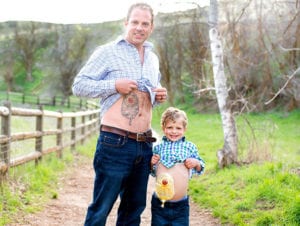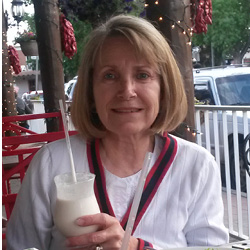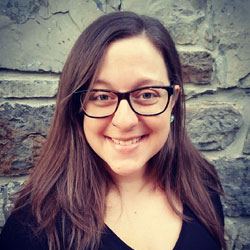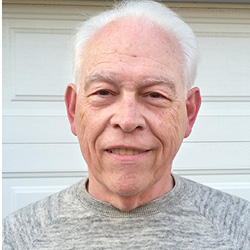By Megan Herrett
Adequately summarizing what our family has gone through over the past almost ten years requires going back to the very beginning. Our daughter, Maggie was three months old when we realized that she looked a little jaundiced. Our pediatrician agreed and ran what would be the first of hundreds of tests to determine what was wrong with our baby and why her liver function tests were so elevated. After being seen by multiple specialists here in Boise for a few months, we were referred to a doctor at Primary Children’s Medical Center in Salt Lake City in November of 2008.

Photo by: Natalie Koziuk Photography (www.nkoziukphotography.com)
When Maggie was about six or seven months old, we noticed that she was starting to scratch quite a bit. Her arms, feet, and ears were covered in scabs and scratch marks. This itching was a side-effect of her liver not processing bile correctly – when not processed by the liver, the bile backs up into the bloodstream and circulates back through the body, resulting in an increase number of bile salts in the body. It is these bile salts in the bloodstream that make an individual with a liver disease very itchy.
At first, we were able to control her itching through several medications but by the time she was 12 months-old, her itching had become unbearable. At that time, her liver was deteriorating quickly and she was exhibiting some developmental delays as a result of the incessant itching. In a matter of weeks, she had pulled out all of her hair and she was maxed out on her medication dosages.
We were presented with the option of an ostomy-placing surgery when Maggie was just over one-year-old as an alternative to a liver transplant. The purpose of her ostomy would be to (1) drain bile from her body to combat the itching, and (2) slow the progression of her disease by giving her liver a much-needed reprieve.
To be honest, I was devastated when I first heard the words, “ostomy bag.” I imagined a life where Maggie would never wear a bikini or be a cheerleader or be captain of her swim team – all very big concepts when you are talking about a one-year old child. I imagined her being bullied because she was different. But, we needed a solution…and we needed to act quickly.

Photo by: Natalie Koziuk Photography (www.nkoziukphotography.com)
Maggie underwent ostomy surgery on October 30, 2009, and we haven’t looked back. She is now eight-years-old and is thriving health-wise as well as academically. Additionally, she is also excelling on a competitive gymnastics team. And although Maggie absolutely beams on the outside, she struggles with confidence because of her ostomy pouch. She is fiercely private and does not want any of her peers to know. My husband and I have worked tirelessly to emphasize to her that her pouch is nothing to be ashamed of – after all, it saved her life and she would not be the person she is today without it.
In 2010, we were blessed by the birth of our son, Winston. We soon discovered that he was plagued with the same disease and would then undergo the same surgery when he was just over one-year-old. Although this news was devastating at the time, we have come to realize that it was a blessing in disguise. Both of them have the same liver disease and both wear ostomy pouches – commonalities that they can rely on when the going gets tough.
I can still recall my “aha moment” though – that moment when I realized that we would not be a family that sat idly by and let her pouch be a source of shame or embarrassment for her. Maggie was probably two years old at the time and we were in the throes of potty-training, where our previous line of attack of onesies and bib overalls to prevent her from yanking her pouch off, were no longer an option. She was finally in a shirt and a pair of pants…and her ostomy bag was peeking out from the hemline of her shirt as we left a restaurant. A man entering the restaurant noticed her ostomy pouch and said, “Ewwwww! What IS that?” Although my initial reaction was one of anger and dismay, it was then that I realized that working with her would be only one piece of the puzzle – we also needed to work with the community to help educate, support and raise awareness for those like Maggie so that the shame, fear and embarrassment would fade away to empowerment and pride.
It was this “aha moment” that led me to contact the United Ostomy Associations of America in January of 2016 about bringing their Run for Resilience Ostomy 5k to Boise. My inquiry was met with a resounding “YES!” We held our inaugural race on Saturday, October 8th and had over 160 people registered for the 5K and Kids’ Mile events. We even had participants, including ostomates and ostomy nurses, drive in for the race from Spokane, Washington and Lewiston! And Hollister even donated ostomy pouches to include in our race registration bags. If nothing else, I am hopeful that this year we laid the foundation for many successful years to come and got some ostomy-related dialogue started. Instead of “ewww,” maybe people will say, “Oh, I know what that is and that saved their life!”

 My colostomy story began when, at age 56, I discovered that I had late-stage colorectal cancer. A large tumor was discovered during my first colonoscopy, and it was cancerous. Thus began a long journey that eventually led to colostomy surgery on my 64th birthday. After the initial surgery to remove the tumor and part of my colon and rectum, I had radiation and two rounds of chemotherapy. The radiation permanently damaged my intestines and caused a bowel blockage that required more surgery, followed by years of chronic diarrhea and abdominal pain. I finally found a surgeon in my home state who cut out some of the intestinal damage and gave me the surgery that infinitely improved my quality of life.
My colostomy story began when, at age 56, I discovered that I had late-stage colorectal cancer. A large tumor was discovered during my first colonoscopy, and it was cancerous. Thus began a long journey that eventually led to colostomy surgery on my 64th birthday. After the initial surgery to remove the tumor and part of my colon and rectum, I had radiation and two rounds of chemotherapy. The radiation permanently damaged my intestines and caused a bowel blockage that required more surgery, followed by years of chronic diarrhea and abdominal pain. I finally found a surgeon in my home state who cut out some of the intestinal damage and gave me the surgery that infinitely improved my quality of life. Saying that my ostomy gave me my life back is not an understatement. I don’t think I have ever felt better in my entire life. I was diagnosed with Crohn’s when I was 15 and in the 12 years I suffered before having surgery, I never once achieved full remission. I missed more school than I attended, had to take a medical withdrawal from college, and struggled to find and keep a job. I was in so much pain and having so many symptoms that I couldn’t leave the house for entire days at a time.
Saying that my ostomy gave me my life back is not an understatement. I don’t think I have ever felt better in my entire life. I was diagnosed with Crohn’s when I was 15 and in the 12 years I suffered before having surgery, I never once achieved full remission. I missed more school than I attended, had to take a medical withdrawal from college, and struggled to find and keep a job. I was in so much pain and having so many symptoms that I couldn’t leave the house for entire days at a time. I had ulcerative colitis that was unresponsive to any treatments including remicade infusions. In January of 2006 I had ostomy surgery. My first comment was “It is so quiet down there.”
I had ulcerative colitis that was unresponsive to any treatments including remicade infusions. In January of 2006 I had ostomy surgery. My first comment was “It is so quiet down there.”
